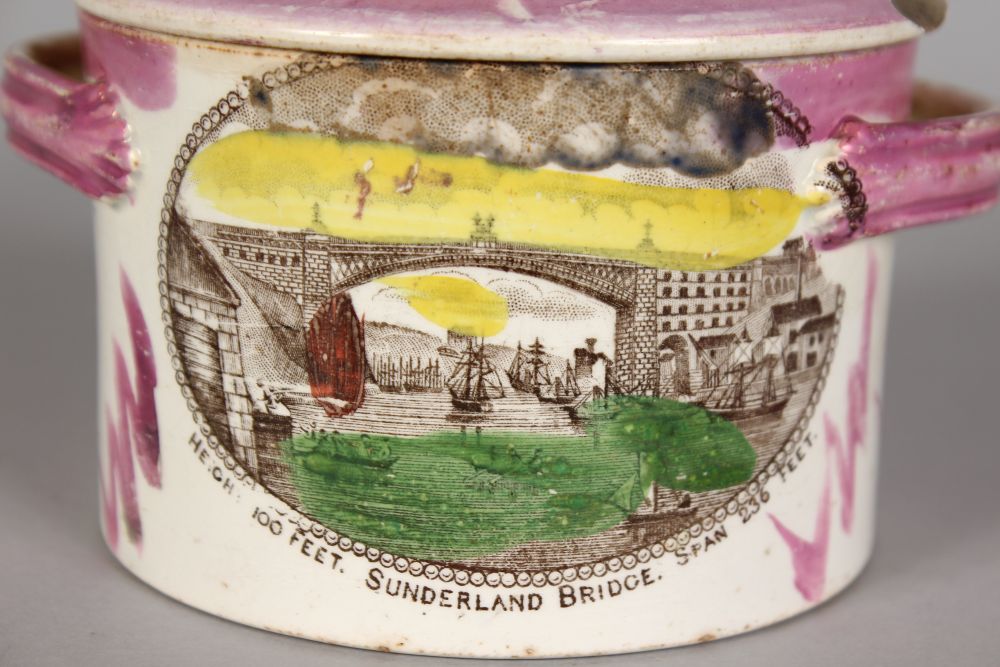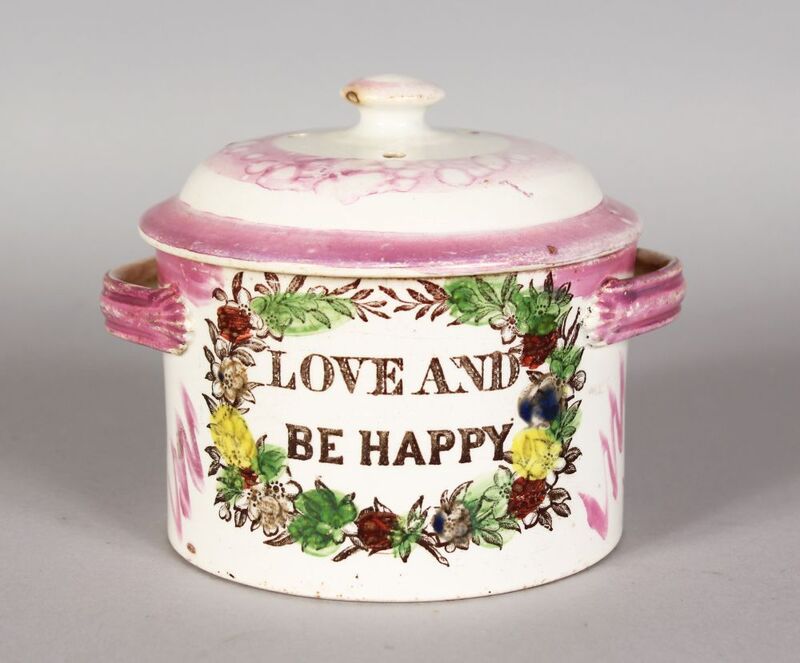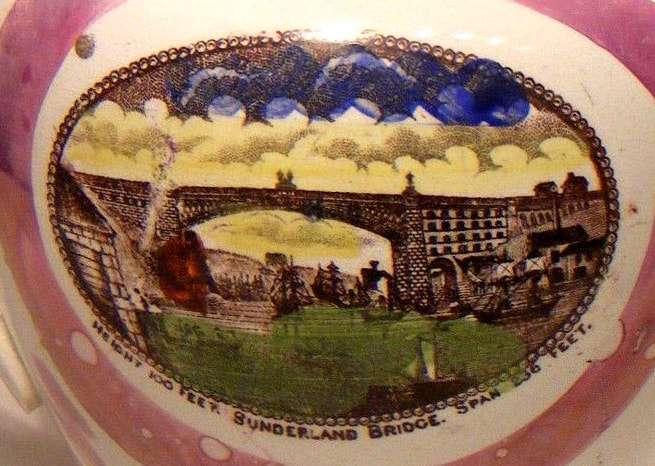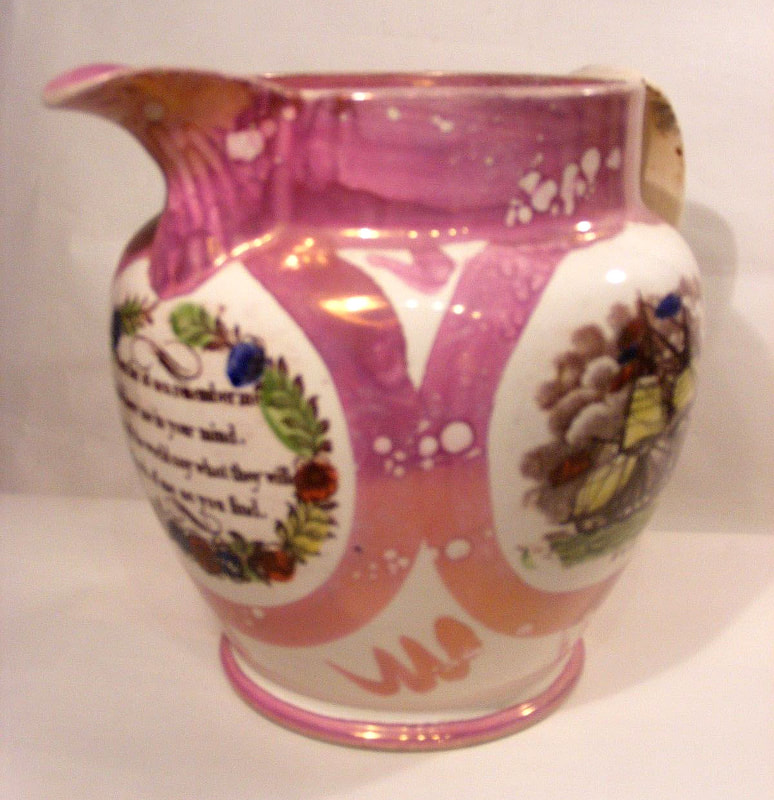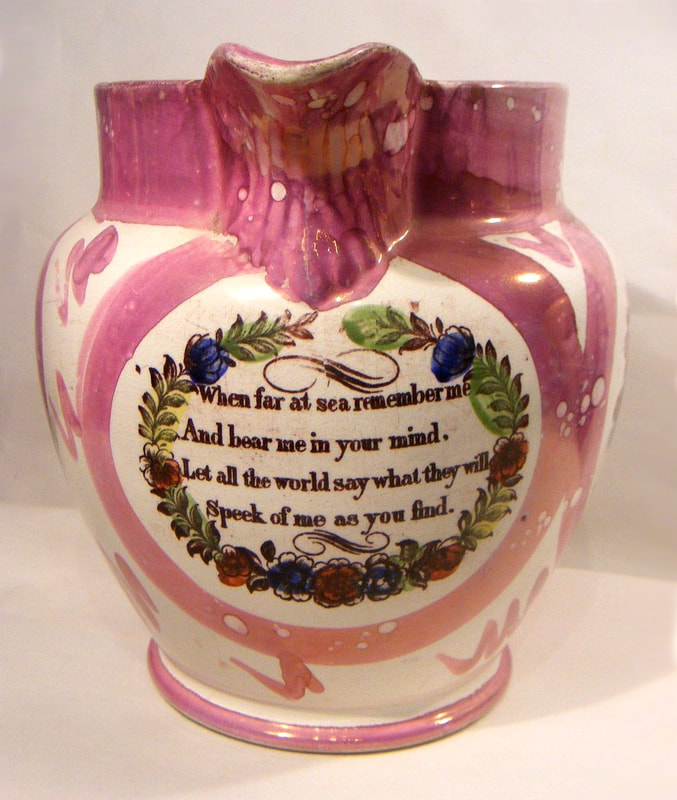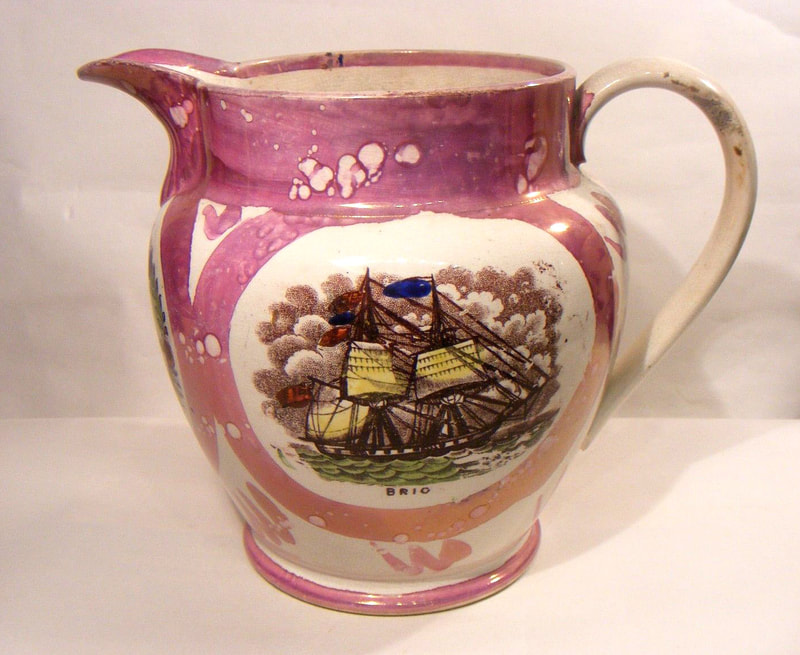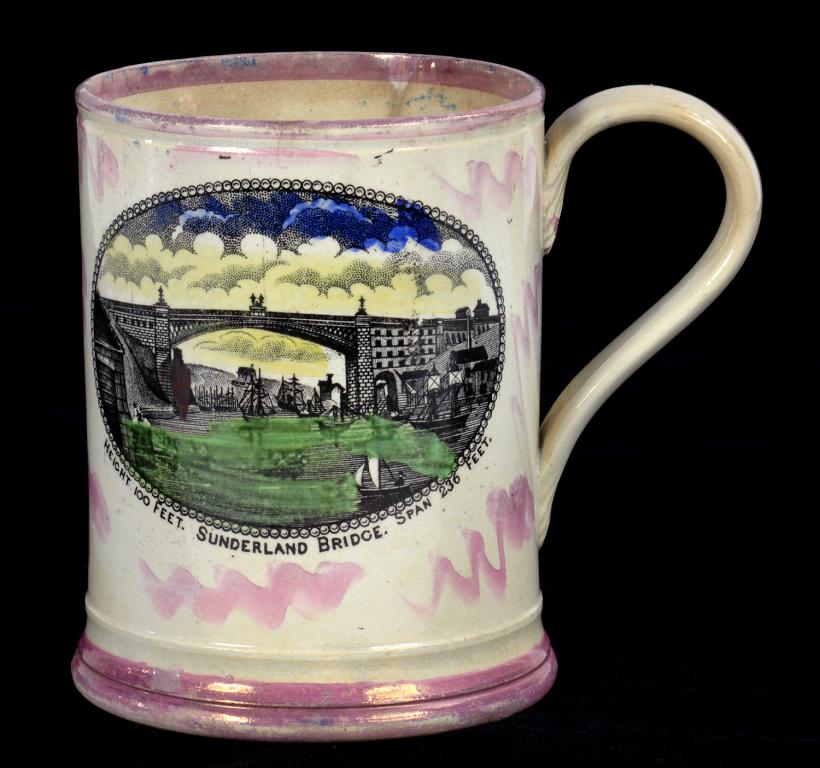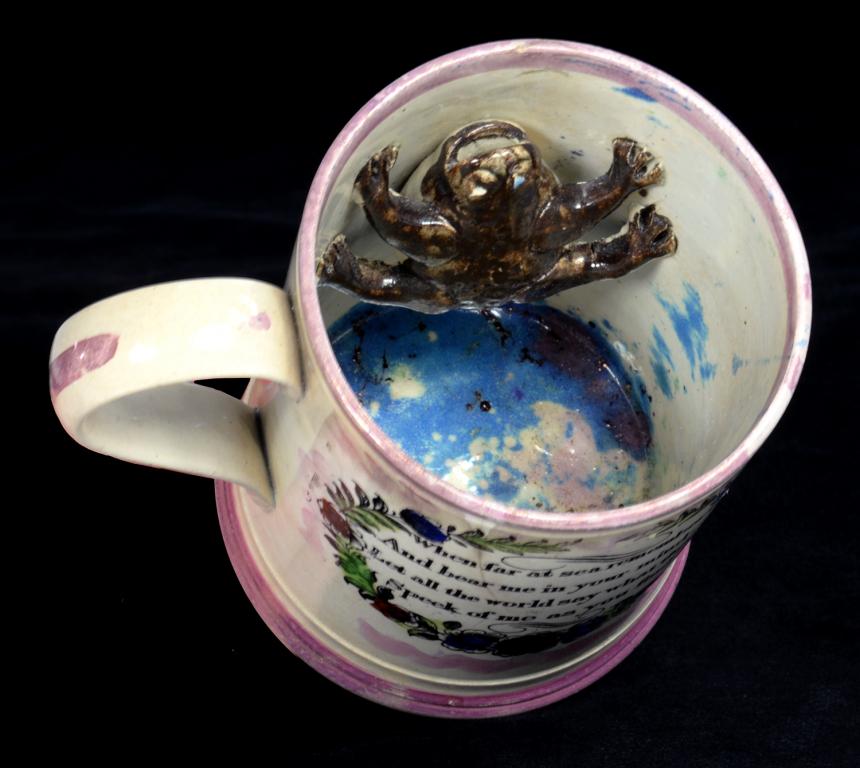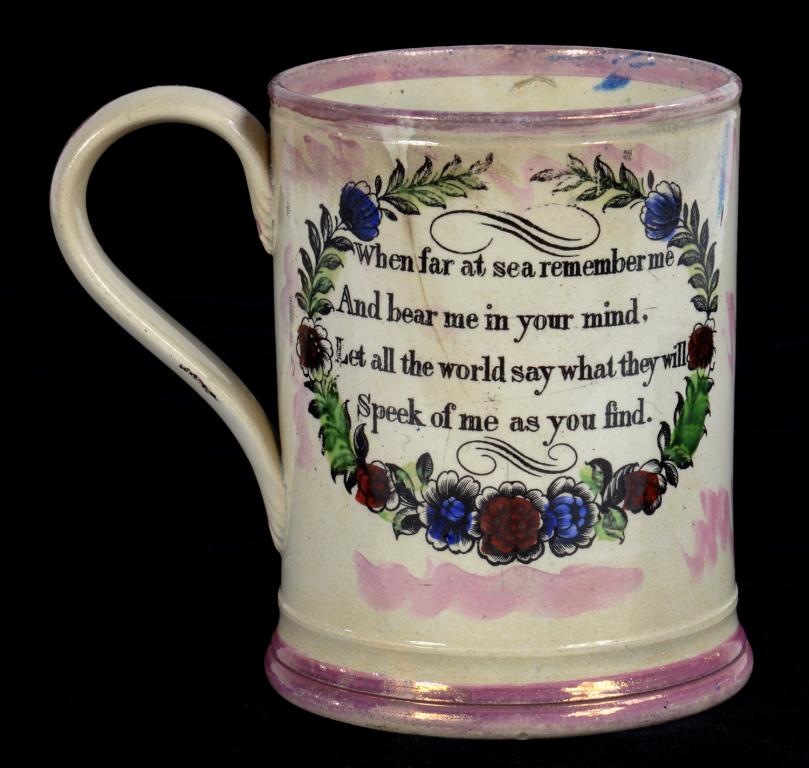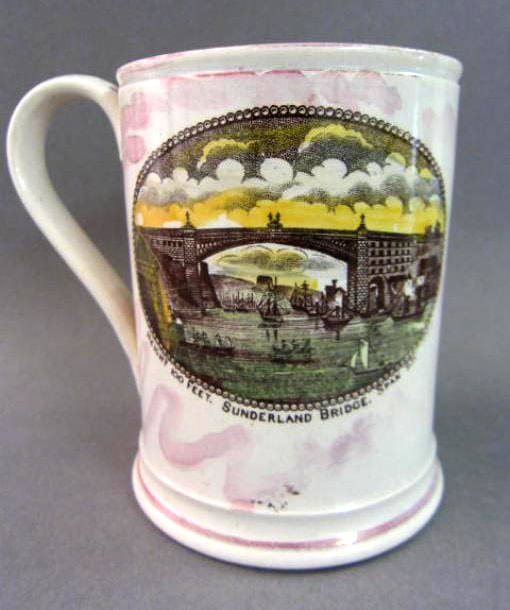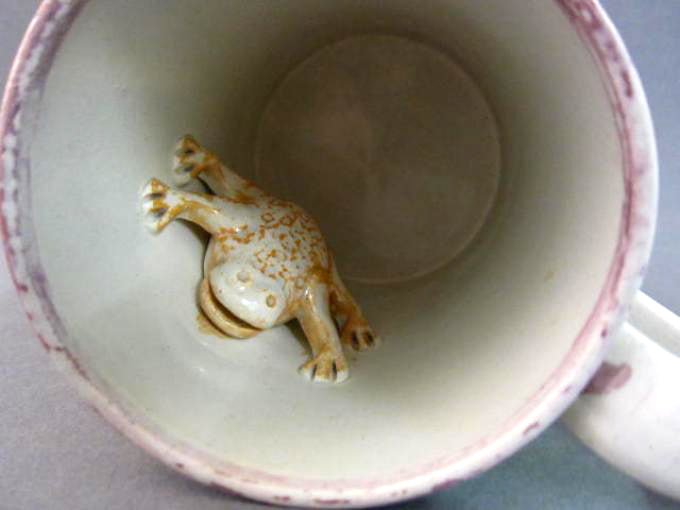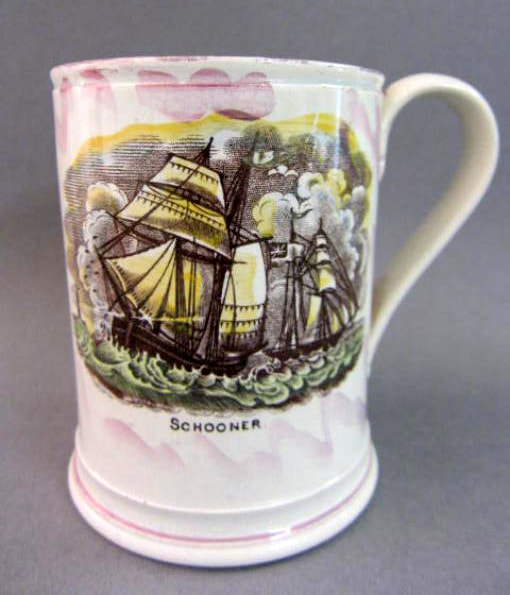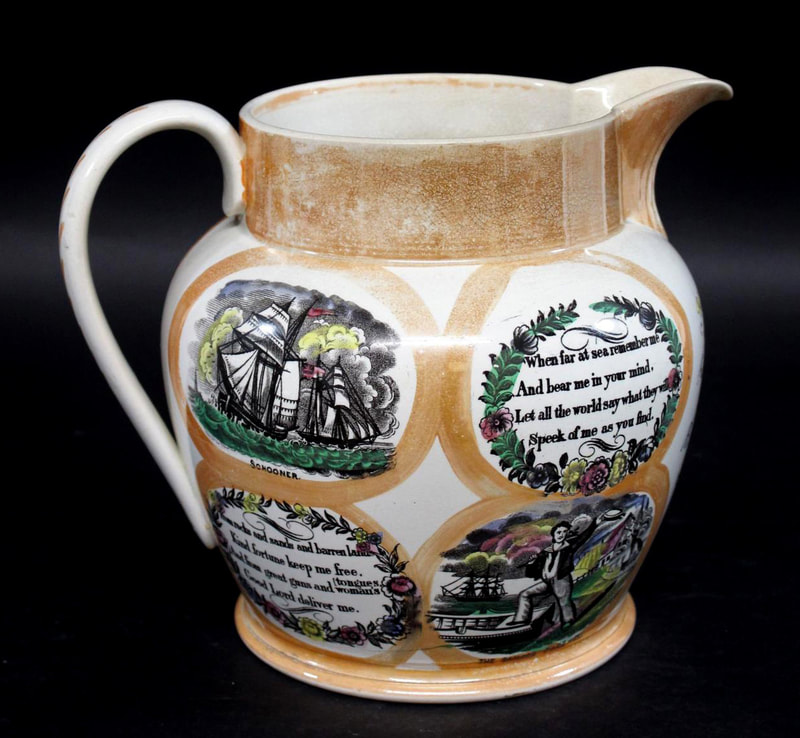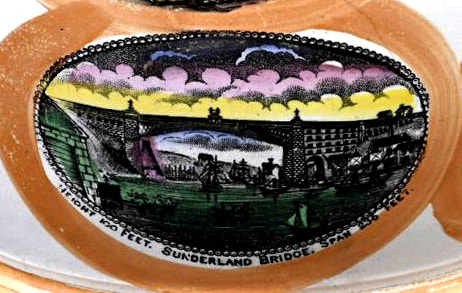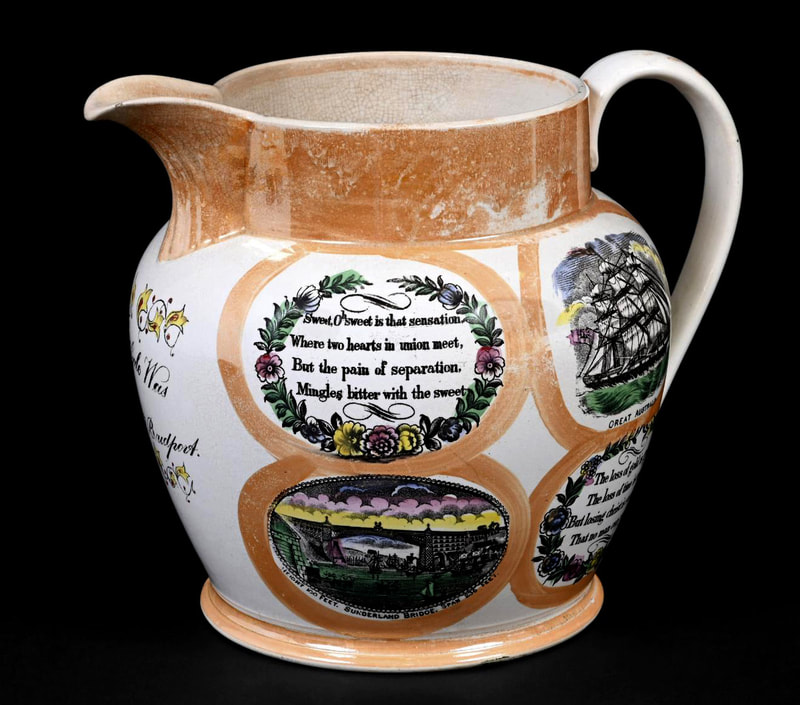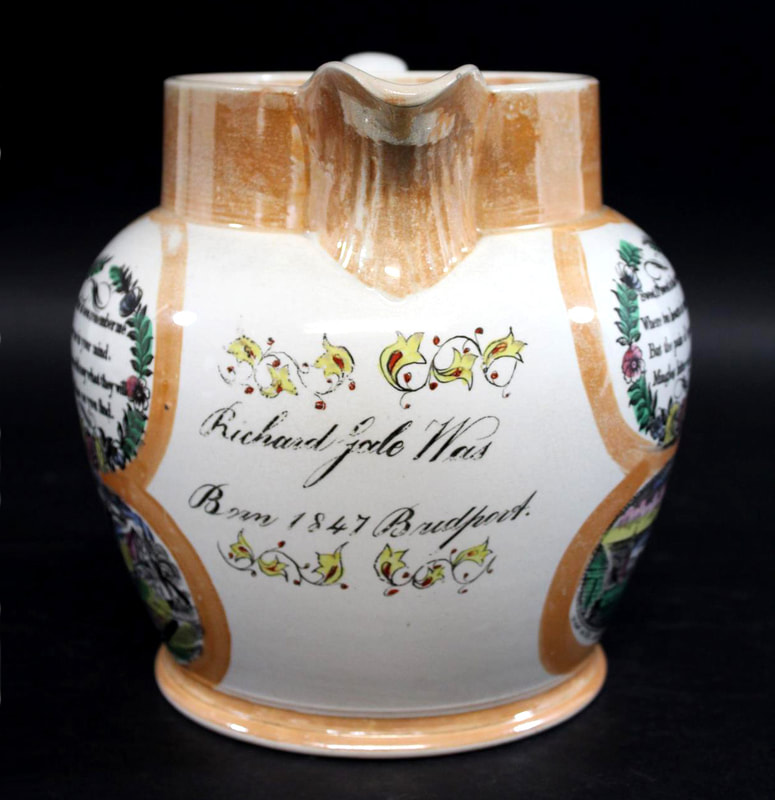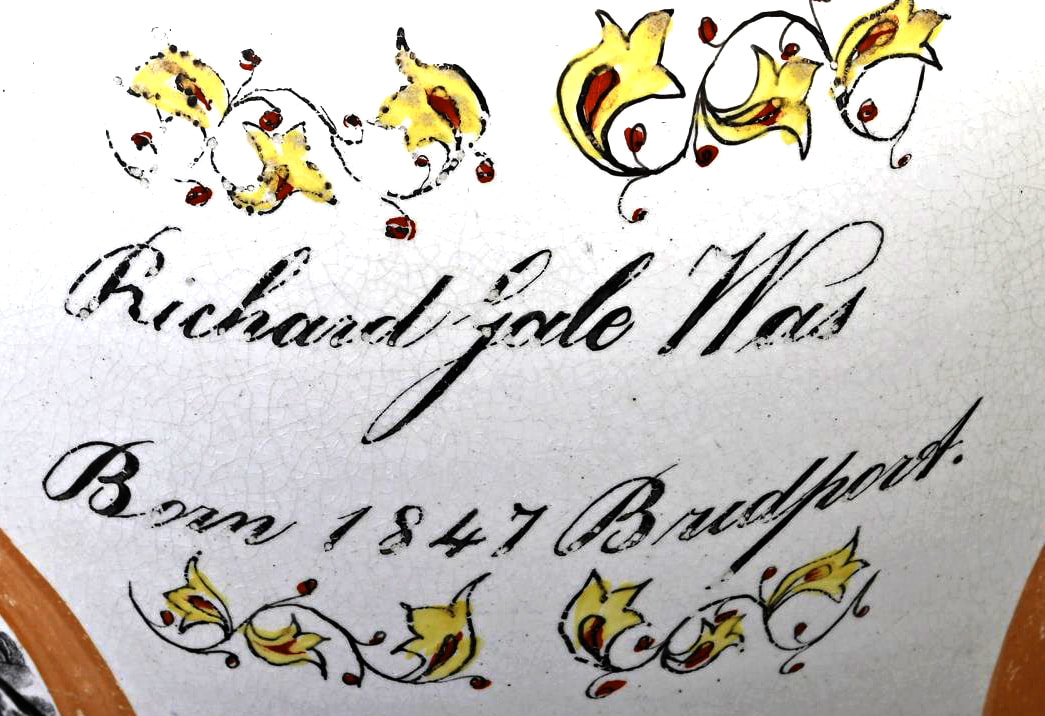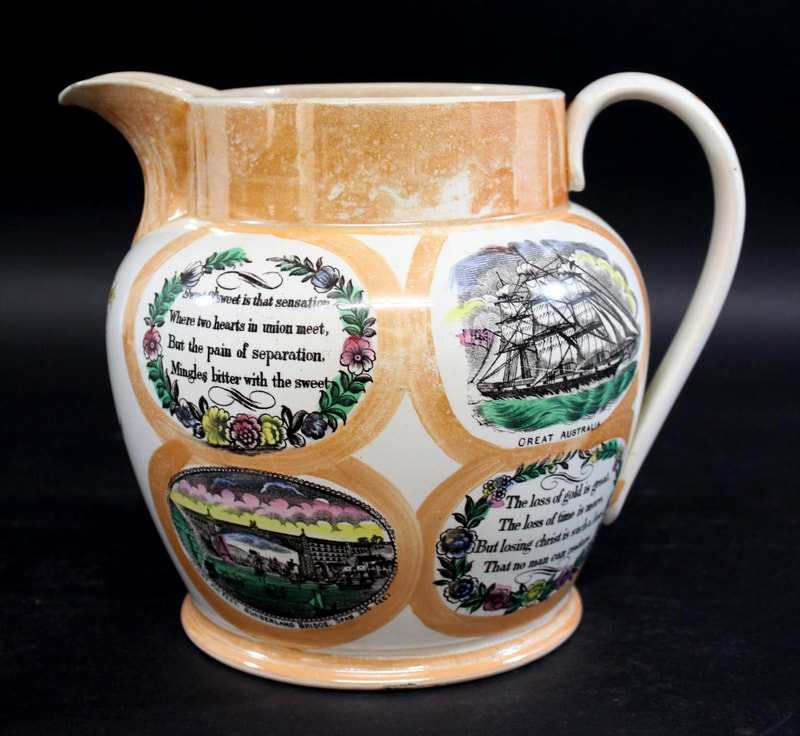Sunderland Bridge – Bridge 16
Moore & Co's Wear Pottery and Scott's Southwick Pottery
The transfer appears on wares associated with both Scott's and Moore's potteries. The most obvious explanation being, as Baker writes, that 'Scott's supplied earthenware to Moore's Wear Pottery [...] presumably plain for decoration' (Baker page 54). This is evidenced by the fact that the enamel decoration is consistent on items from both potteries (see below).
An eel pot or butter dish with typical Moore zig-zag lustre decoration.
A jug with a heavily lustred collar, again a feature of Moore's pottery.
Two frog mugs with relatively crude looking frogs.
A large orange jug, c1870, with a variety of the later Moore /Scott shared transfers.
The transfer printed in gold on a blue glass rolling pin. Norman Lowe, who has a similar pin with a transfer of the 'Star of Tasmania', has suggested that by the orange lustre period, the copper plates with these transfers had been moved to Sheepfolds Warehouse which, employing the principles of division of labour, decorated white earthenware items for both Moore's and Scott's. Sheepfolds were known to have had a side line in decorating rolling pins.
Attributed to Ball's Deptford Pottery
The rolling pin below is of a kind associated with Ball's Pottery. Balls was the last of the North Eastern potteries to continue producing 'Sunderland ware' and became a repository for copper plates and moulds from both Sunderland and Tyneside potteries. These pins come with a mixture of transfers from different potteries. Balls continued to produce 'Sunderland ware' items of varying quality into the early 20th century.
